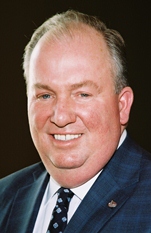As part of our special report on Climate Change and the Insurance Industry, PC360 asked five agents to discuss how, if at all, their business is responding to the issue. The producers represent a broad cross-section in terms of geography (N.Y., the Midwest and California), size and specialties.
 James D. Sutton, President and Owner, James F. Sutton Agency Ltd., East Islip, N.Y.
James D. Sutton, President and Owner, James F. Sutton Agency Ltd., East Islip, N.Y.
Recommended For You
Want to continue reading?
Become a Free PropertyCasualty360 Digital Reader
Your access to unlimited PropertyCasualty360 content isn’t changing.
Once you are an ALM digital member, you’ll receive:
- Breaking insurance news and analysis, on-site and via our newsletters and custom alerts
- Weekly Insurance Speak podcast featuring exclusive interviews with industry leaders
- Educational webcasts, white papers, and ebooks from industry thought leaders
- Critical converage of the employee benefits and financial advisory markets on our other ALM sites, BenefitsPRO and ThinkAdvisor
Already have an account? Sign In Now
© 2025 ALM Global, LLC, All Rights Reserved. Request academic re-use from www.copyright.com. All other uses, submit a request to [email protected]. For more information visit Asset & Logo Licensing.








